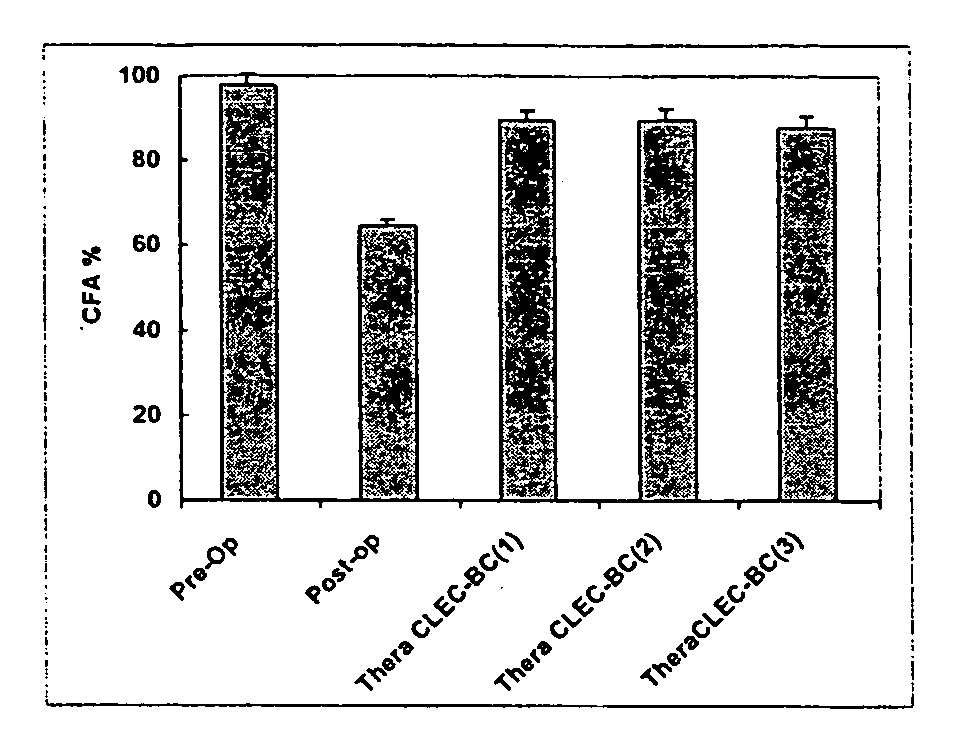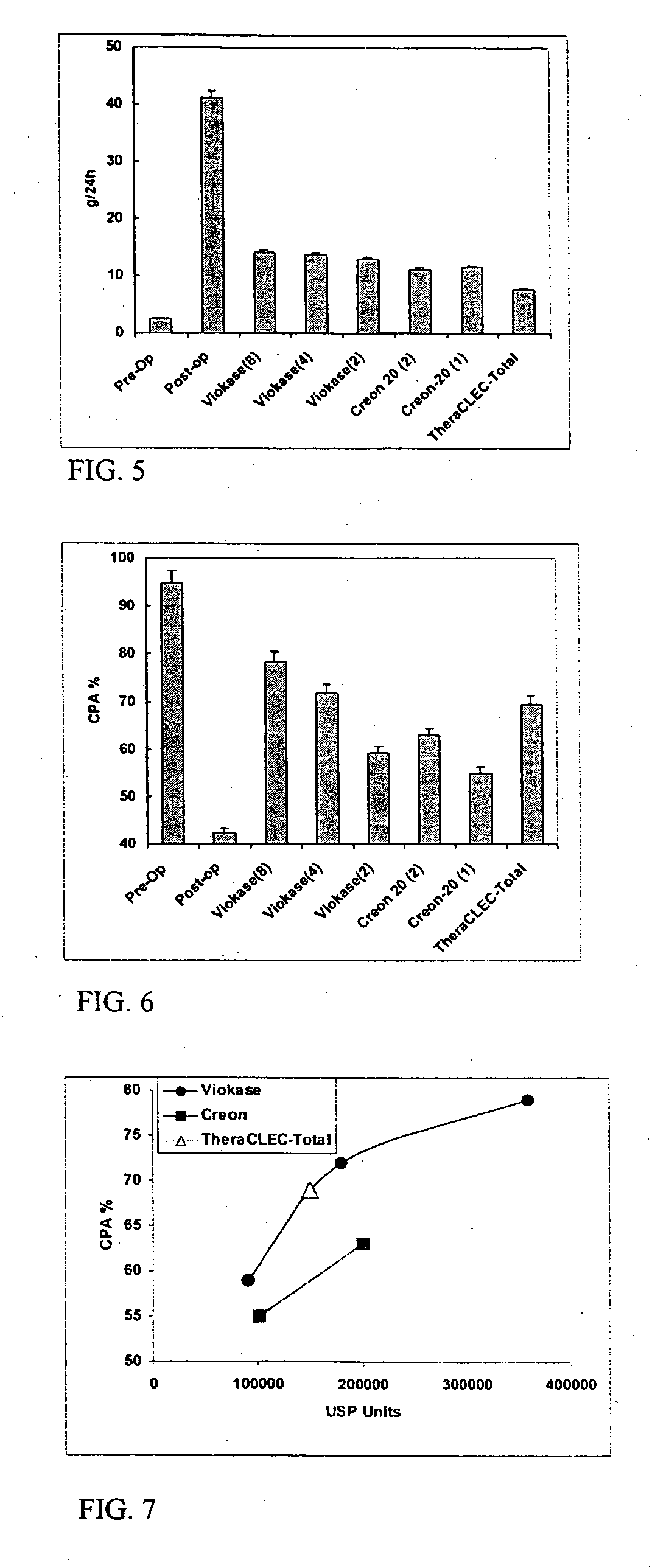Lipase-containing composition and methods of use thereof
a technology of lipase and composition, which is applied in the field of compositions containing lipase, can solve the problems of chronic pancreatic steatorrhea caused by chronic lipase, commercially available preparations of lipase can not completely treat symptoms associated with lipase insufficiency, and commercially available porcine lipase can not eliminate chronic pancreatic steatorrhea, etc., to achieve high stability against proteases
- Summary
- Abstract
- Description
- Claims
- Application Information
AI Technical Summary
Benefits of technology
Problems solved by technology
Method used
Image
Examples
example 1
US Pharmacopeia Assay for Lipase Activity
[0060] The activity of Burkholderia cepacia lipase was determined by titrating the released fatty acids from olive oil against sodium hydroxide as described by U.S. Pharmacopeia (Assay for lipase activity in Pancreatin, USP 24, 2000, 1254-1255). The lipase activity in USP units was calculated by comparison to the activity of the standard, using the lipase activity stated on the label of USP Pancreatin Lipase RS. One USP unit of lipase activity is the amount of enzyme that liberates 1.0μ Eq of acid per minute at pH 9.0 and 37° C. under the conditions of the Assay for lipase activity.
example 2
Olive Oil-Based Assay for Lipase Activity
[0061] Lipase activity was measured using an olive oil assay. Lipase supernatant sample were assessed for activity against olive oil in pH 7.7 buffer. The assay was carried out titrimetrically using slight modifications to the procedure described in Pharmaceutical Enzymes—Properties and Assay Methods, Ruyssen and Lauwers, (Eds.), Scientific Publishing Company, Ghent, Belgium (1978).
[0062] Solutions used in the assay included the following:
[0063] 1. Olive oil emulsion: 16.5 gm of gum arabic (Sigma) was dissolved in 180 ml of water and 20 ml of olive oil (Sigma) and emulsified using a Quick Prep mixer for 3 minutes.
[0064] 2. Titrant: 0.05 M NaOH;
[0065] 3. Solution A: 3.0 M NaCl;
[0066] 4. Solution B: 75 mM CaCl2.2H2O;
[0067] 5. Mix: 40 ml of Solution A was combined with 20 ml of Solution B and 100 ml of H2O;
[0068] 6. 0.5% Albumin.
Lipase Substrate Solution
[0069] The substrate was prepared by adding 50 ml of olive oil emulsion (solution ...
example 3
Assay for Protease Activity
[0072] The activity of proteases was determined by using casein as a substrate in a procedure as described by U.S. Pharmacopeia (Assay for protease activity in Pancreatin, USP 24, 2000, 1254-1255). The protease activity in USP units was calculated by comparison to the activity of the standard, using the protease activity stated on the label of USP Pancreatin Amylase and Protease RS. One USP unit of protease activity is the amount of enzyme that hydrolyzes casein at an initial rate such that an amount of peptide (that is not precipitated by trichloroacetic acid) is liberated per minute that gives the same absorbance at 280 nm as 15 nmol of tyrosine under the conditions of the assay for protease activity.
PUM
| Property | Measurement | Unit |
|---|---|---|
| Fraction | aaaaa | aaaaa |
| Fraction | aaaaa | aaaaa |
| Fraction | aaaaa | aaaaa |
Abstract
Description
Claims
Application Information
 Login to View More
Login to View More - R&D
- Intellectual Property
- Life Sciences
- Materials
- Tech Scout
- Unparalleled Data Quality
- Higher Quality Content
- 60% Fewer Hallucinations
Browse by: Latest US Patents, China's latest patents, Technical Efficacy Thesaurus, Application Domain, Technology Topic, Popular Technical Reports.
© 2025 PatSnap. All rights reserved.Legal|Privacy policy|Modern Slavery Act Transparency Statement|Sitemap|About US| Contact US: help@patsnap.com



